Prologue
Blackwing, also known as Black Feather in the OCG, is one of the archetypes of the 5Ds era. Making their debut in Crimson Crisis, the archetype consisted mostly of DARK Winged-Beasts. With the release of more sets, Blackwings quickly evolved into a competitive deck. Blackwings were one of the first archetypes able to quickly swarm the field with powerful archetype-specific Synchros. In this article, we'll review Blackwing's role leading up and into Edison Format.
Blackwings Leading up to Edison
The Debut
Blackwings first appeared in the TCG in March 2009, almost a full year before Edison Format. Debuting in Crimson Crisis, the archetype started out with only 5 cards to their name. Even though Blackwings as a solo archetype weren't "playable" yet, many players noticed the strength behind Gale. Gale was a Level 3 Tuner with an effect that permanently halves a monster's stats. Because of this, many playersopted to play a Gale as a solid stand-alone card.
The Start of an Era
With the release of Raging Battle, Blackwings received 6 much needed cards. Among these was Black Whirlwind, one of the strongest search cards at the time. It contributed to Blackwing's swarming strategy and propelled Blackwings into a prominent spot in the meta. With a consistent engine and a group of powerful Synchros to back them, Blackwings became a terror in the middle of 2009. It wasn't until September that they got checked with Gale being limited.
Emblems of Honor
Gale's being cut to 1 did hurt the deck, but it was nowhere near enough to kill the deck off. With the release of Ancient Prophecy, Blackwing gained a new weapon in their arsenal: Vayu. Vayu's release stimulated a new style of the deck known as Vayu Turbo while also powering up classic Blackwing lists. Although Vayu looked strong on paper, no one knew how strong it would be until the next major event. With SJC Orlando around the corner, Blackwings had a chance to cement themselves in the meta once again.
And the Winner is...
Day 2 of SJC Orlando featured multiple archetypes with the majority of the top cut dominated by Lightsworns. However, despite Lightsworn taking over half of the slots in the Top 16, the finals were between 2 Blackwing variants. Rodrigo Togores's classic Blackwing deck took a decisive 2-0 victory over Herman Herrera's Vayu Turbo deck. While this cemented Blackwings as one of the strongest decks in 2009, it also caused another ban list hit. With Rodrigo's deck displaying the full power of Black Whirlwind, it would later be hit in March of 2010 marking the start of Edison format.
Leading into Edison
Edison started with the March 2010 Ban List which effected both meta variants of the Blackwing deck. Although the main hit was Black Whirlwind going from unlimited to semi-limited, indirect hits hurt as well. Allure of Darkness for went from 2 to 1, hurting the consistency of the deck. Burial from a Different Dimension was also limited, hurting some of the recursion in Vayu Turbo. Despite this, many players still believed that Blackwings were not dead and chose to play the deck at SJC Edison.
Notable Cards of the Deck
I'll be reviewing some of the Blackwing specific cards and non-generic cards in Blackwing lists at the time. Staple cards such as Heavy Storm, Book of Moon, Mirror Force and etc. will NOT be reviewed due to their universal usage.
Main Deck Monsters
Blackwing - Shura the Blue Flame
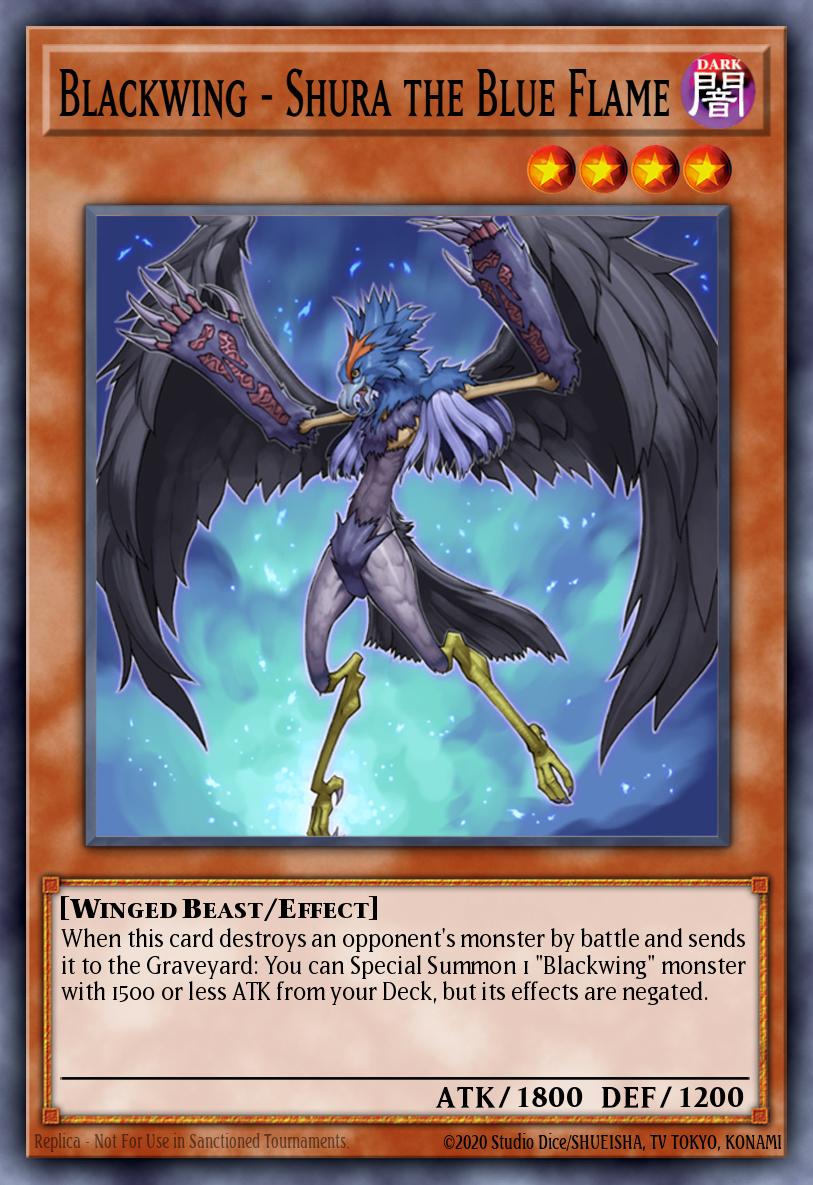
Shura is a Level 4 1800 ATK beater with a tutoring effect when destroying a monster and sending it to the GY. It was mainly used to tutor smaller monsters, making it a solid 3 of.
Shura was great because of it's high ATK, convenient Level and powerful effect. Shura's high ATK complimented Black Whirlwind, letting you search most Blackwing monsters other than himself and Sirocco. This gave you many options when summoning Shura onto a field with Whirlwind. Shura being Level 4 was useful for making Level 5, 6, and 7 Synchros.
This play was common if you had Whirlwind on the field as it could add Kalut or Gale; letting you beat over almost any monster in the format. The Vayu summoned by Shura can then be used to Synchro (since it's effects are negated) or saved as fodder for Icarus Attack. Shura was a solid monster during Edison and one Blackwing's strongest stand-alone monsters. Leaving a Shura on the field uncontested could quickly snowball into an overwhelming advantage on board.
Blackwing - Blizzard the Far North
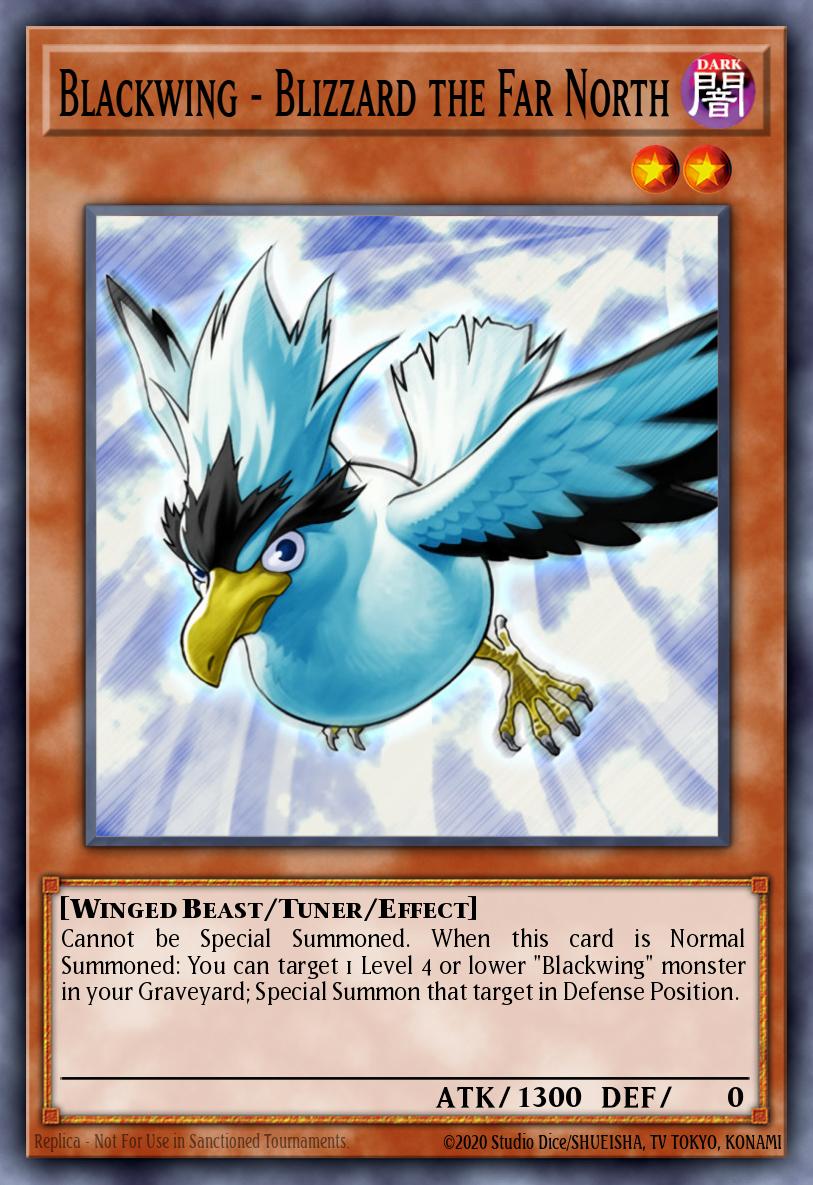
Blizzard was great because it gave the deck easy access to Level 5 and 6 Synchros. At the time, Catastor, Brionac,and Goyo Guardian were all strong Synchros each with individual strengths. Catastor was a strong option to combat non-DARK monsters. Brionac provided a unique form of removal that had little counter-play. Goyo had extremely high ATK for a Level 6 and beat over most other monsters. Armed Wing was also an option as it provided 2800 ATK of piercing damage which was great for dealing with low DEF monsters such as Ryko or tokens. Blizzard also had low ATK which made it easy to search with Whirlwind.
In Edison, Blizzard was a great card to follow a strong opening turn or to reverse the board back in your favor. Since Blizzard required little setup, you could often drop it on any turn and generate a strong monster.
Blackwing - Bora the Spear
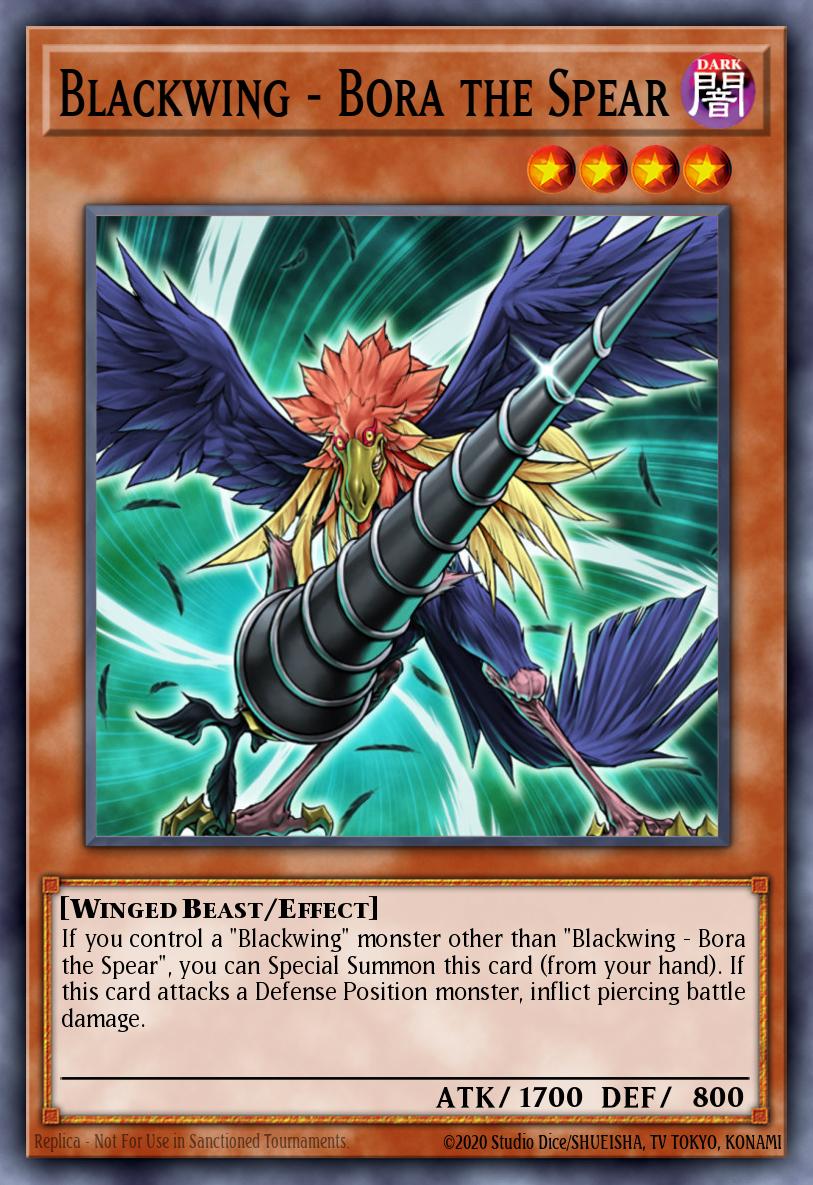
Bora is a Level 4 1700 ATK piercing monster that can be special summoned if you control another Blackwing that isn't Bora. It's great for piercing low defense monsters and contributes to Blackwing's swarming strategy.
Bora is a card that screams offense when you read its effects. With 2 aggressive effects, Bora helped end games quickly before your opponent could reach a full setup. Bora also has strong interactions with Sirocco and Kalut for unexpectedly ending games. It also has solid ATK which lets you search for most Blackwing monsters with Whirlwind.
In Edison, Bora was exactly what you'd expect: an aggressive card. When combo'd with Sirocco, you can consolidate your damage into one attack which would allow you to play around cards like Battle Fader, Gorz, and even Tragoedia (to some extent). This combo also helps you push for lethal damage and catch your opponent off-guard for a quick win.
Blackwing - Gale the Whirlwind
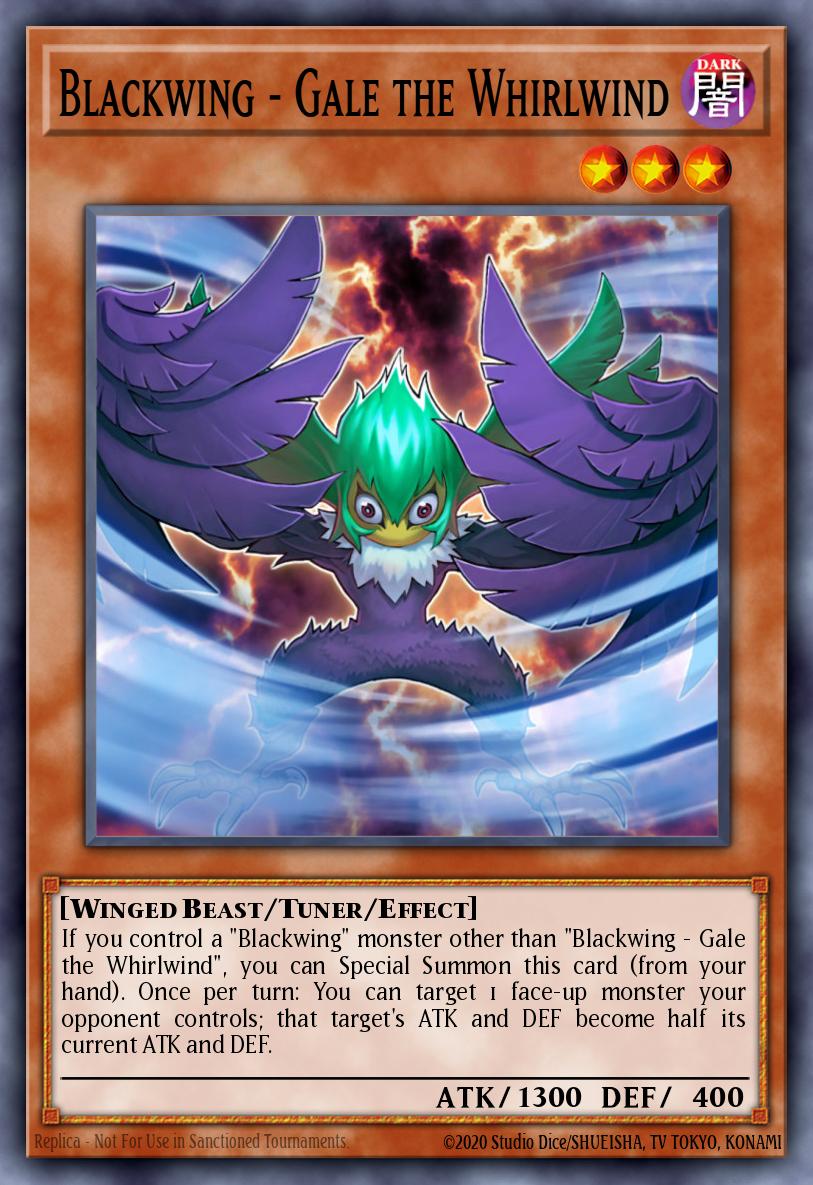
Gale is Level 3 Tuner that has the same swarming effect as Bora. It also permanently halves the stats of an opponent's monster, letting it beat over monsters like Stardust Dragon, Catastor, and Brionac.
Gale is acknowledged by many as the best Blackwing of the deck. It is a Level 3 Tuner, making it the best Blackwing for summoning Armor Master or Black Rose Dragon. It also has low ATK, making it relatively easy to search with Whirlwind. In addition, Gale's main selling point is to combo its effect with other Blackwing monsters such as Shura to quickly turn the board.
During Edison, Gale was limited to 1. This makes the timing where you drop Gale very important, as you'll often only summon it once per game. Although Gale was a powerful card that can quickly swing the board, it was also a vulnerable card with weaknesses in its strengths. Summoning Gale early and rushing into Armor Master was sometimes too greedy and punished by Caius or Ryko. Leaving Gale alone on the board is also too vulnerable with its low ATK. Holding it was sometimes also not right as it could be doing a lot more than just sitting in your hand. Using Gale properly can net you big value while using it improperly wastes one of your strongest cards.
Blackwing - Kalut the Moon Shadow
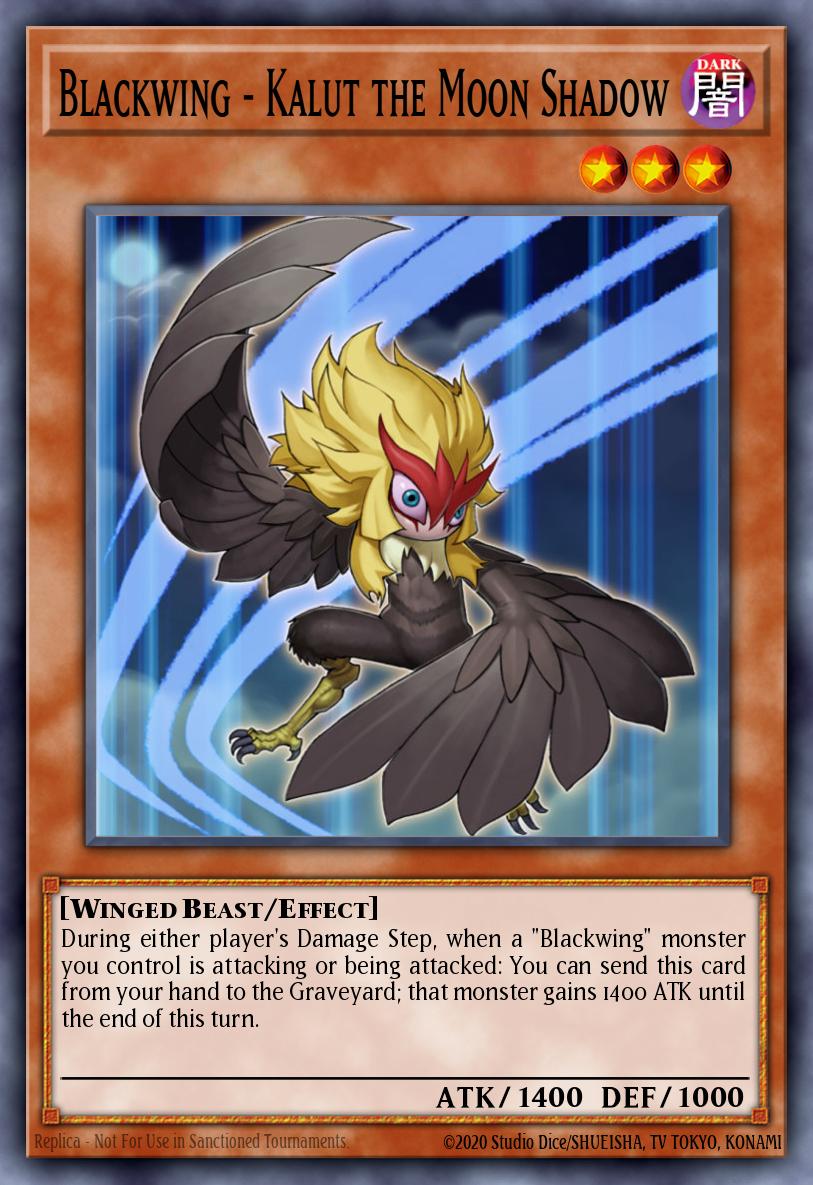
As one of the 1st ATK modifier hand traps along with Honest, Kalut was great for solidifying presence on the field and pushing for extra damage.
Kalut was a great card as it provided both offensive and defensive elements to the deck. With low ATK, Kalut is searchable with Whirlwind after summoning one of your stronger Blackwings. The ATK was also conveniently just high enough to search Gale or Blizzard if you were forced to normal summon it. Kalut was mainly used to help Shura beat over bigger monsters. With a combined ATK of 3200, Shura + Kalut could beat over almost every monster in the meta.
In Edison, Kalut was a great card in general, but especially good against Gladiator Beasts and Flamvell Firedog. With both decks needing to attack in order to create advantage, Kalut often effectively negated your opponent's Battle Phase. Fetching Kalut with Whirlwind is often a solid turn 1 play and could quickly lead to mid-game dominance.
Blackwing - Sirocco the Dawn
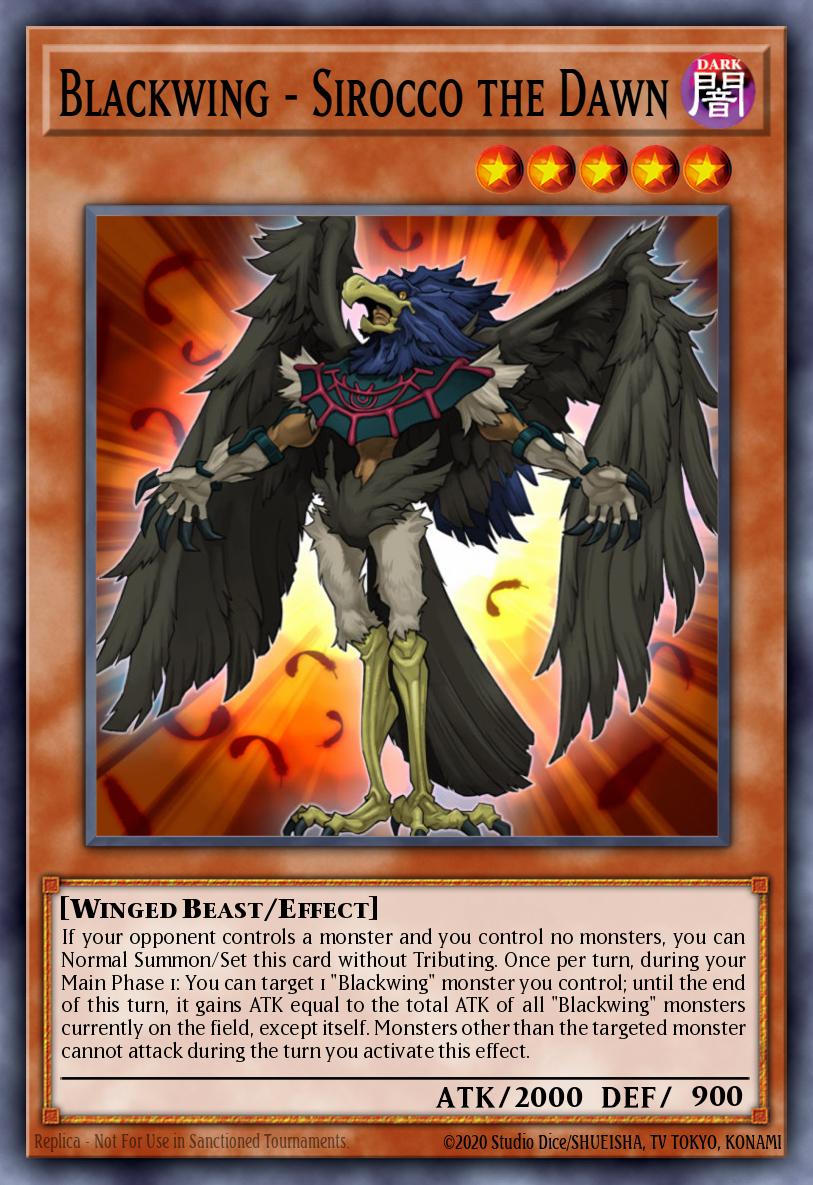
Sirocco has the highest ATK among the used main deck Blackwings, making it great to summon when you have Whirlwind. Sirocco also has a convenient level as it's often used to make level 7 Synchros. It's also great in the mirror as Sirocco can gather the ATK of your opponent's Blackwings into your own. Vayu also pairs well with Sirocco letting you easily summon Armed Wing by banishing them from the GY.
In Edison, Sirocco is a great monster to contest the board on Turn 2. Paired with Whirlwind, you can search Shura for a next turn play or Gale for a swift Level 8 Synchro. Afterwards, Sirocco can be used as Vayu fodder to create threats in the mid-game and pressure your opponent. Sirocco is great for creating and pushing an early advantage. Although it seems a bit bricky, most lists play 3 as a solid Turn 2 summon and a great compliment to Whirlwind.
Blackwing - Vayu the Emblem of Honor
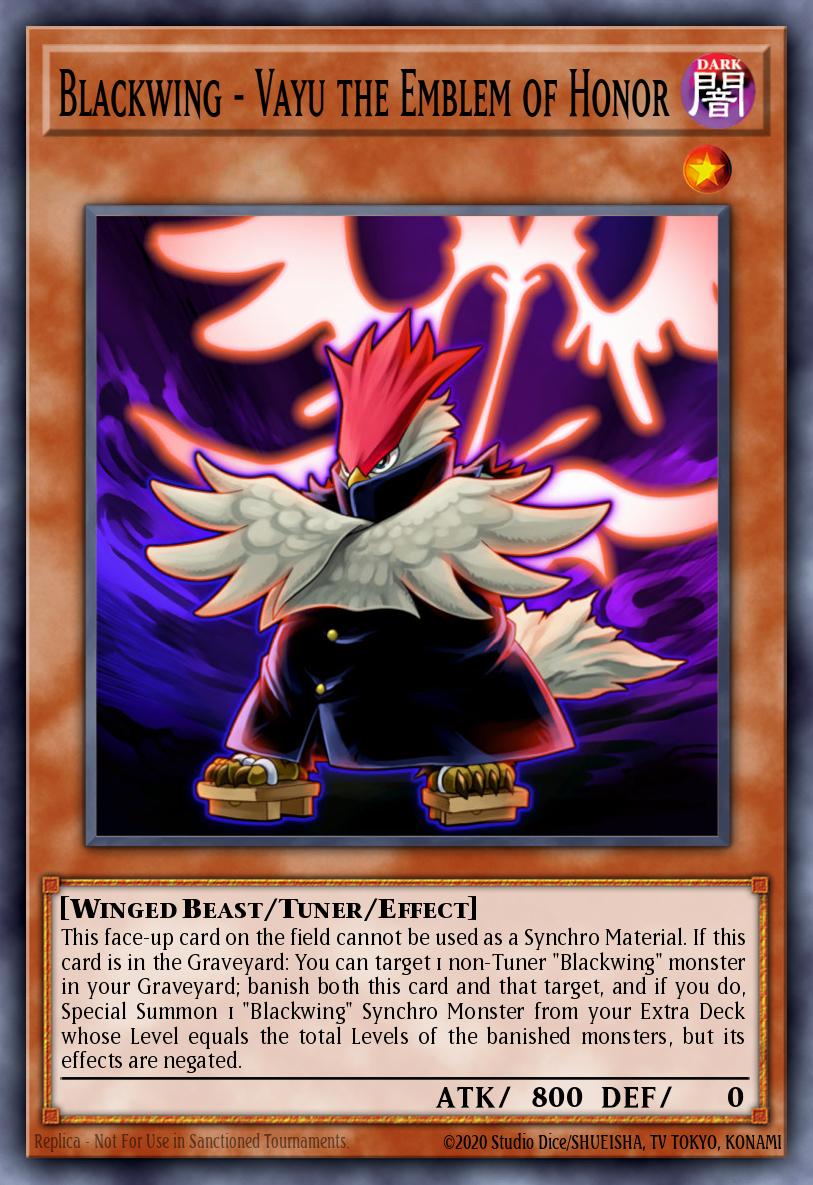
Note : Vayu's effect to "Synchro" from the GY is NOT a Synchro summon. Therefore, monsters summoned by Vayu's effect are not considered to be summoned properly.
Vayu mainly serves 2 purposes in the deck. The first is as a resource in the GY to summon Armed Wing, Armor Master, or Silverwind. The second is as a tutor target for Shura, allowing it to be used as a Synchro material.
In Edison, Blackwings should focus on getting Vayu to the GY as soon as possible. Once in the GY, Vayu can create an extra threat in the mid-game. Generally, Vayu is summoned by Shura and then used to Synchro for 5 or left on the board for Icarus Attack. This play usually resulted in a monster that your opponent would have to up-trade to remove or manually removing threats with Icarus. Cards like Armed Wing that are made with Vayu could also be banished with another Vayu letting you tempo set-up for later in the game. Overall, Vayu is great as it provides you with an almost free monster with decent stats.
Spells
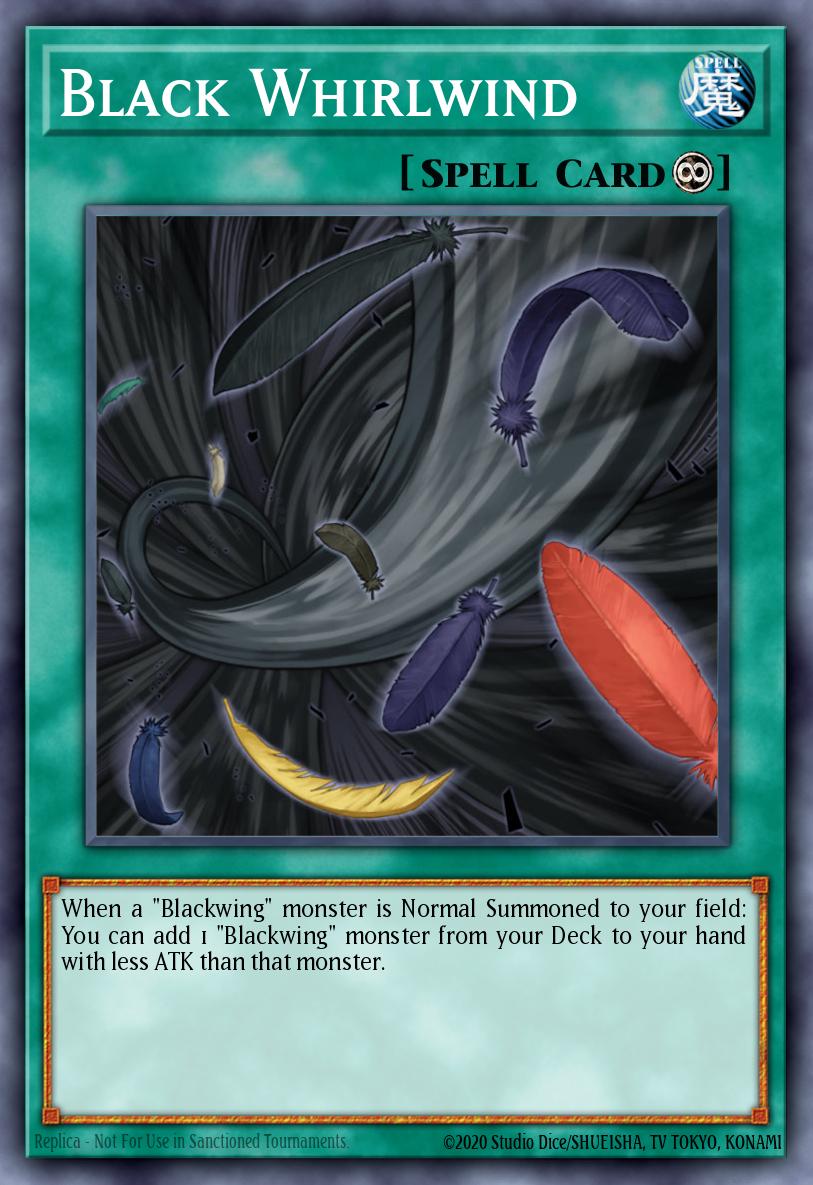
Black Whirlwind
Black Whirlwind is a Continuous Spell that was released in Raging Battle. It had an effect that let you search a Blackwing from your deck when you normal summon a Blackwing. The monster you search must have lower ATK than the monster you summoned and the monster you summoned must be face-up on the field in order for Whirlwind to resolve.
Whirlwind was great for a variety of reasons. For one, Whirlwind gives value to each summon providing you another monster each activation. Whirlwind is also great because of the flexibility in the card. Take summoning Shura for example, Shura's 1800 ATK lets you search almost every other Blackwing in the deck. If you're looking for pushing power, Bora is a good aggressive option. If you want a follow-up play for next turn, Blizzard is solid. Maybe you're going 1st and you want Shura to be a bit more protected, so you search Kalut. Whirlwind isn't just good because of the free cards, but also by turning Blackwings into a toolbox.
Whirlwind is arguably the best card in the deck. Although it needs to be combo'd with other cards, the consistency, utility and flexibility it provides is almost unmatched with any other card in the format.
My Body as a Shield
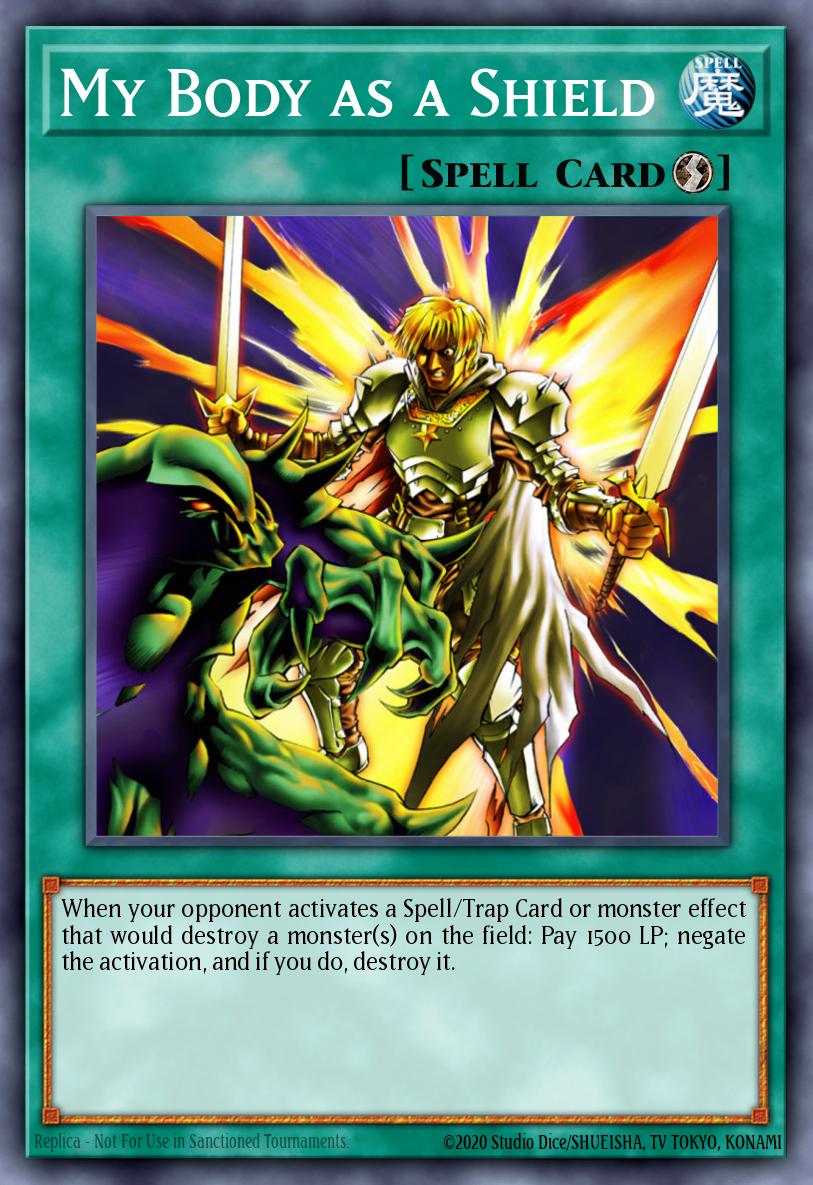
My Body as a Shield, or MBAAS, is a semi-staple Quick-Play Spell card that some players ran. It can negate the activation of a card that destroys a monster(s) on the field and destroy it. This makes it a good tool against Mirror Force, Torrential Tribute, and much more.
In the Blackwing deck, solidifying monsters on the field for Black Whirlwind is very important. Because of the value that Whirlwind brings, making sure your Shura doesn't fall into a Bottomless Trap Hole is a priority. Because of this, MBAAS is a good defensive option against many traps. MBAAS suffers from the fact that it cannot be chained to counter traps or S/Ts already face-up on the field. This is probably the reason why it's only played at 1 if at all. Despite this, MBAAS is a solid option that can catch players off guard.
Traps
Icarus Attack
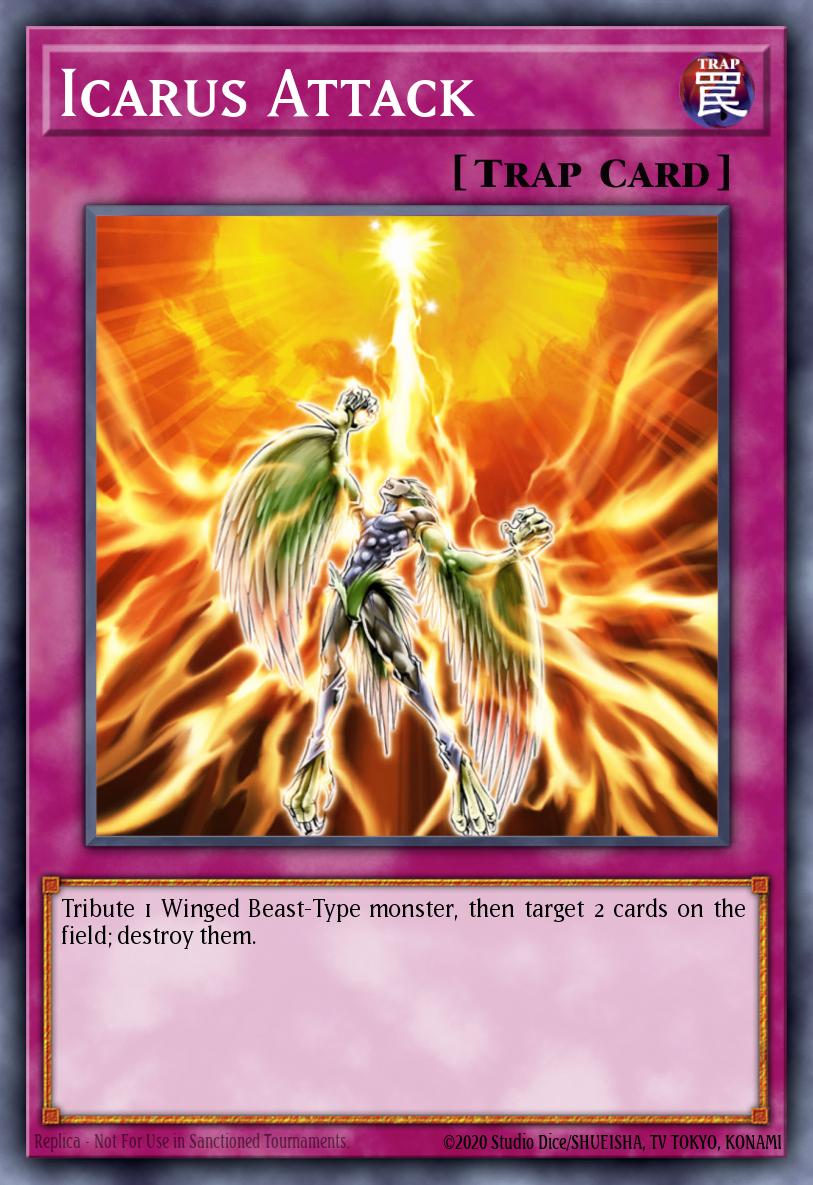
Icarus Attack is a simple trap that tributes a Winged-Beast monster to target and destroy 2 cards on the field. Because you must destroy 2 cards, if your opponent only has 1 card, you're forced to destroy one of your own cards.
Icarus is strong because it helps you up-trade while simplifying the game state. Because Blackwings are a deck that can generate advantage through natural gameplay, simplifying the game state is often advantageous. Icarus also helps you up-trade by chaining Icarus to a Bottomless, Dimensional Prison, or another card that normally trades 1 for 1. Icarus can also be discounted if using a monster summoned off Shura as tribute. Overall, Icarus is just a great card to have at 3.
Delta Crow - Anti Reverse
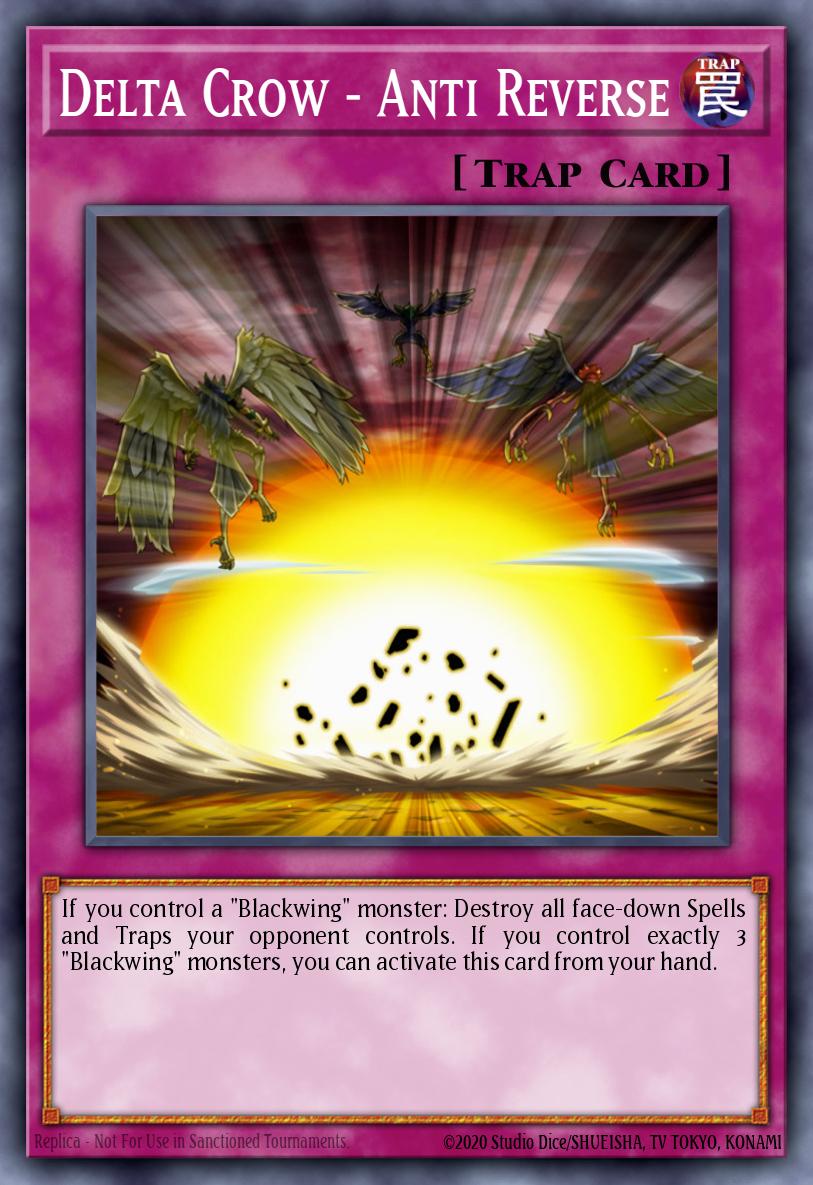
Delta Crow is essentially a Trap version of Heavy Storm for Blackwings. Although Delta Crow doesn't destroy face-up S/Ts, there aren't too many in the format to begin with. As a trap, Delta Crow is usually activated during your opponent's End Phase (where they can't respond with newly set cards). This lets Delta Crow usually up-trade as a 1 for 2 or 1 for 3.
Delta Crow is a card that is fundamentally difficult to play against. If you don't respect Delta Crow, you can give your opponent easy value and leave yourself vulnerable to an attack. However, respecting Delta Crow too much might leave your board too vulnerable to begin with. Delta Crow is often played at 1 with another copy being sided. This makes it great for siding in against a deck that plays a reasonable amount of back-row.
Royal Oppression
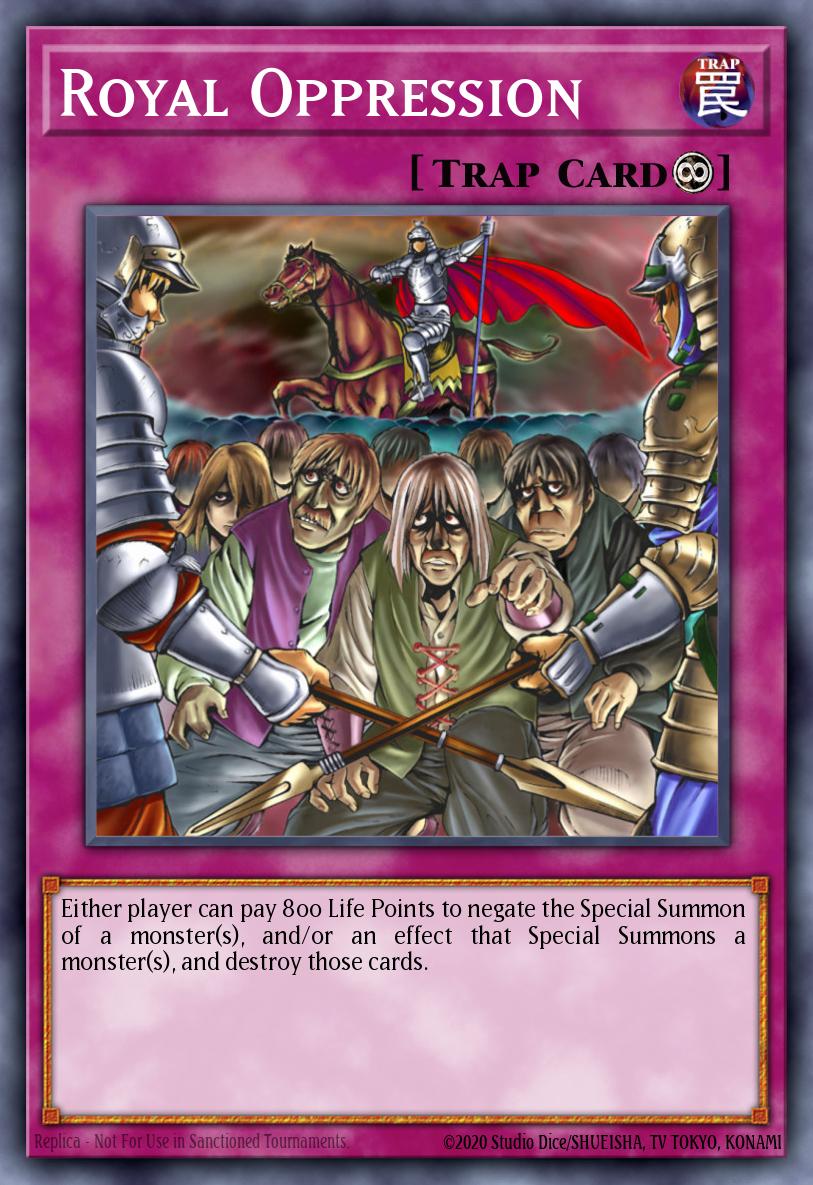
Royal Oppression is a Continuous Trap that excels in negating the special summon of monsters. In respect to its name, Oppression is quite literally oppressive and is arguably the best trap of the format.
Oppression has an effect to negate the special summon or the effect to special summon a monster by paying 800 LP. This makes Oppression a terror in the meta as most decks relied on special summoning.
For Blackwings, Oppression's pros heavily outweighed its cons. Although Blackwings also preferred to special summon, they had win conditions that didn't require it. Where some decks relied on dropping a big boss monster or summoning Debris Dragon into Dandylion, Blackwings could also function as a Beatdown/Control deck with Whirlwind and Kalut. Blackwings could also play around Oppression as Vayu could infinitely activate without being banished if negated. This let Blackwings control the field and summon strong monsters while other decks could not.
Oppression was a terror in the format and the decks that could abuse it did so to its full potential. Oppression would later be Limited and then Forbidden due to its restrictive and oppressive properties.
Extra Deck
Blackwing Armed Wing
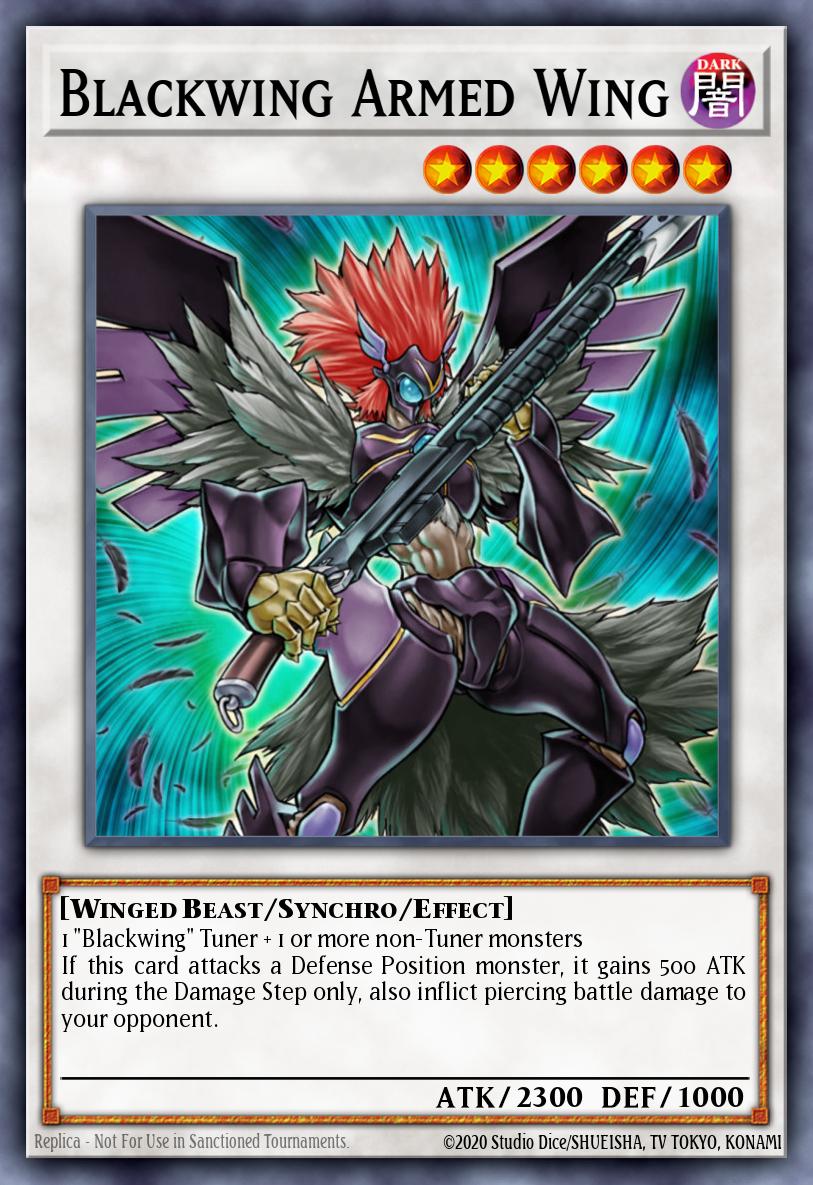
Armed Wing was mainly used for big damage swings and was often summoned out of convenience.
In regards to summoning, Armed Wing is a Level 6 which made it easy to summon through Blizzard or Vayu. Although Armed Wing wasn't the strongest Level 6, it was often free with Vayu. Armed Wing was also a safe Synchro as it was quite disposable and could be used to summon Armor Master with Vayu later. Armed Wing might not have been the best card in the Extra Deck, but it having Blackwing in name made it good enough.
Blackwing Armor Master
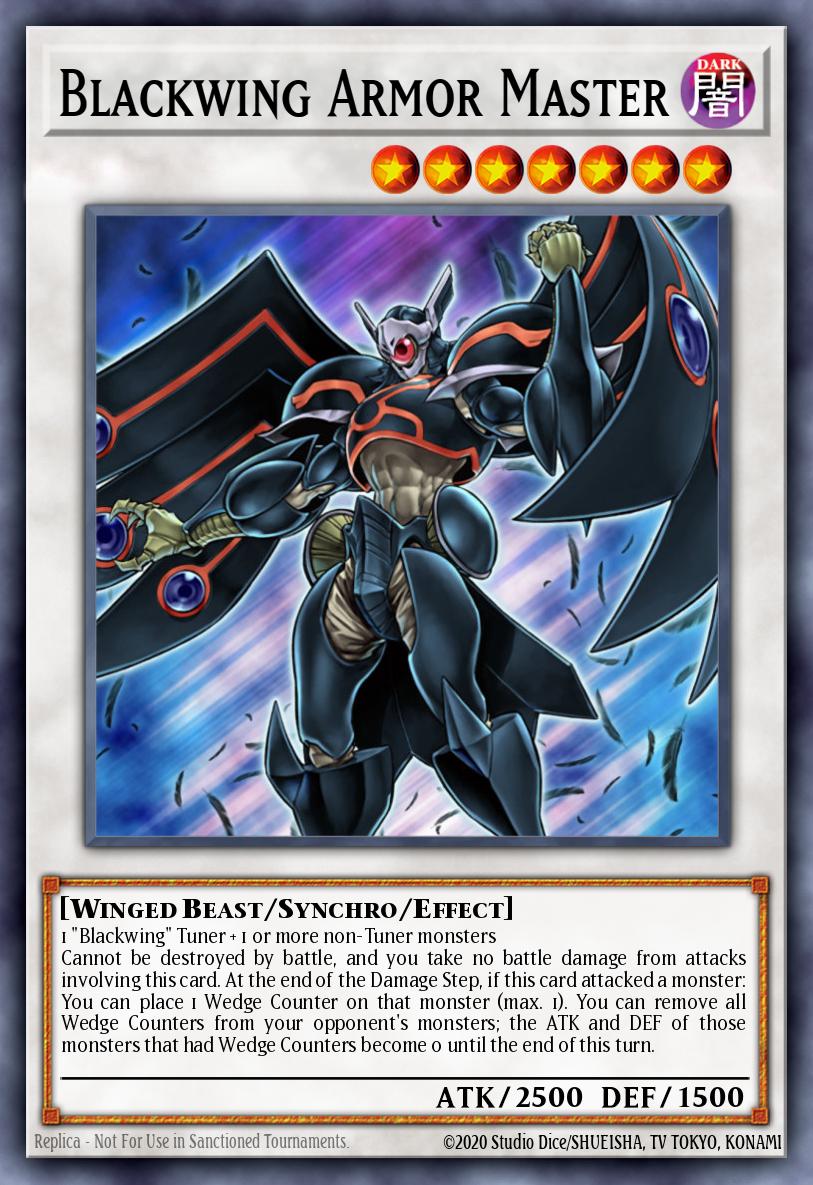
Because of Armor Master's strong stats and battle protection, it often contested Level 8 Synchros and was a nuisance on the field.
Armor Master was basically Blackwing's boss monster during Edison. It was could be summoned with a Level 4 monster + Gale or through Vayu by banishing Armed Wing. Armor Master also has an effect that applies Wedge Counters to monsters it battles which could later be removed to reduce their stats to 0. Although this doesn't happen much, it helps Armor Master beat over stronger monsters such as Goyo Guardian and Thought Ruler Archfiend.
Armor Master was a strong card against established boards, but is often weaker against set monsters. With cards such as Ryko so popular in the format, trading an Armor Master for a Ryko is usually unfavorable. Despite this, Armor Master was strong because there were limited immediate answers to it. Other than spot removal, Armor Master could only be outed by defensive back-row and niche cards like Dark End Dragon. This made Armor Master a great card to sit on after clearing out some of the field.
Playstyle and Strategy
Early Game
In the early game, you want to set up quickly while establishing a board. Focus on trying to summon Shura, Bora, or Sirocco while having some back-row to contest the board. Grabbing early advantage by triggering Shura's effect or up-trading with Delta Crow or Icarus helps create favorable boardstates.
Mid Game
In the mid game, you want to make use of the work you've done in the early game. Blizzard and Vayu can summon strong Synchros to further pressure the opponent or make a comeback if you've lost early advantage. Dark Armed Dragon is also great if you are lucky enough to draw it while having a low number of DARKs in the GY. Focus on pressuring your opponent with strong monsters and ending the game before the late game. Blizzard is great for this as it creates a respectable threat while only committing one card.
Late Game
In the late game, Blackwings isn't as strong as a lot of other decks. Due to a lack of grinding resources, decks that play Pot of Avarice can outlast you. Blackwings also don't have a strong 1 card swing like Rekindling or Judgment Dragon which is a big disadvantage.
This doesn't mean the game is lost. If you've gotten to late game while still controlling the board, Oppression is great for relieving pressure. Holding onto board wipes such as Black Rose Dragon in the Extra Deck and Torrential Tribute can also be great for countering your opponent's plays. Focus on ending the game quickly and taking some risks. Sometimes it's better to take a risk as every turn you give your opponent is a turn for them to draw into one of those big game-swinging cards.
Closing Thoughts
While Blackwings might not be the best deck of the format, they're certainly a respectable option. With a unique and flexible playstyle, Blackwings don't have too many bad matchups and have a fair chance against any deck. Blackwing's main strength is that they draw power from all parts of the deck. It has solid monsters and a strong S/T lineup with Black Whirlwind, Icarus Attack, and Delta Crow - Anti Reverse.
As Edison is a largely unexplored format (due to its short lifespan), Blackwings is one of the decks that haven't been tested to perfection. Feel free to try unconventional techs or strategies that weren't discussed and maybe you'll find something that people didn't realize back in 2010. I'd recommend this deck in Edison to anyone who enjoys the archetype or is looking for a rather basic deck to ease into the format. I hope you enjoyed this deck introduction/review of one of my personal favorite archetypes!



